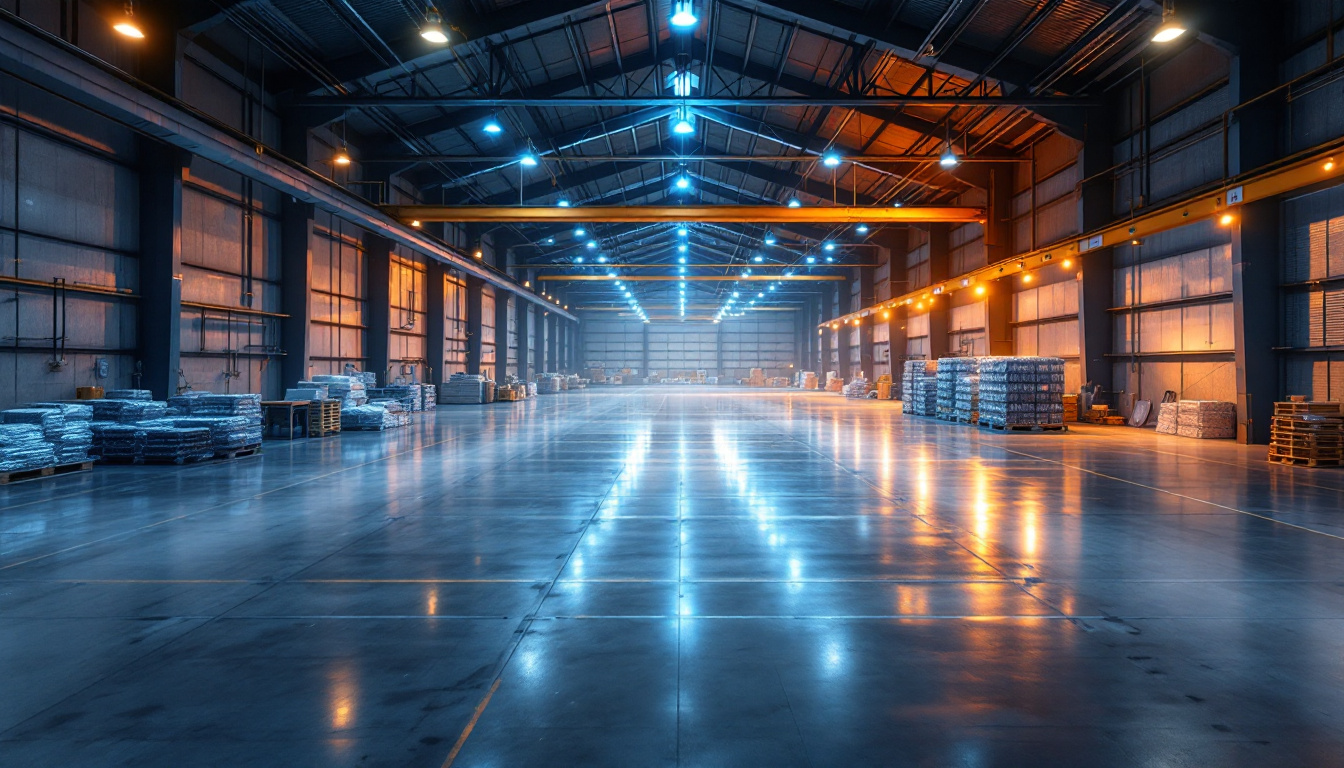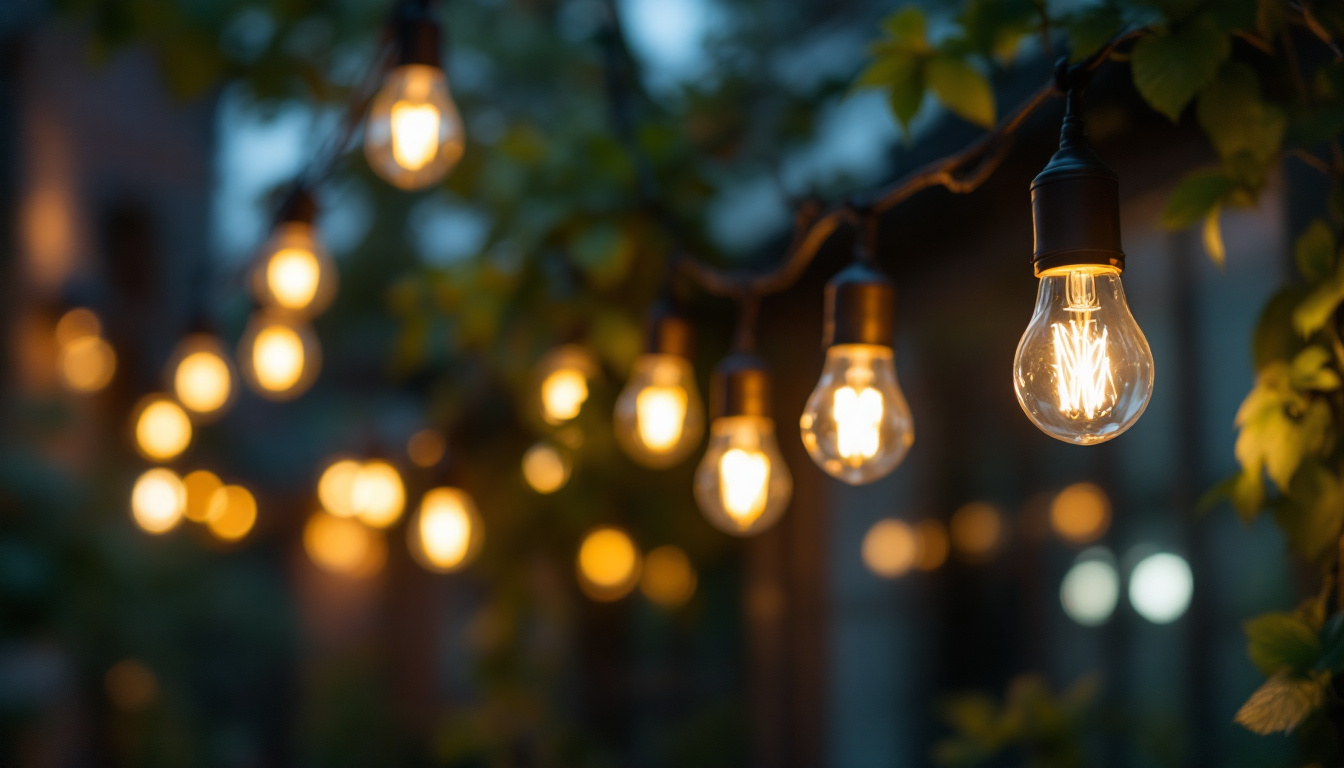
In the evolving landscape of commercial lighting, LED technology has emerged as a transformative force. For lighting contractors, understanding the implications of LED lighting on their projects is crucial for staying competitive and meeting client expectations. This article delves into how commercial LED lights are reshaping the industry and the specific impacts they have on lighting contractors’ projects.
LED (Light Emitting Diode) technology has revolutionized the way commercial spaces are illuminated. Unlike traditional lighting options, LEDs offer a range of benefits that make them increasingly popular among businesses and contractors alike. From energy efficiency to longevity, the advantages of LED lighting are hard to ignore.
One of the most compelling reasons for the adoption of LED lights is their energy efficiency. LEDs consume significantly less power compared to incandescent or fluorescent bulbs, which translates into lower electricity bills for businesses. For lighting contractors, this means being able to offer clients a solution that not only enhances their space but also reduces operational costs.
Moreover, the long lifespan of LED lights—often exceeding 25,000 hours—means that replacements are infrequent. This durability can lead to substantial savings over time, making LED installations an attractive proposition for clients seeking to minimize maintenance costs. Additionally, many utility companies offer rebates and incentives for businesses that switch to LED lighting, further enhancing the financial appeal of this technology. These financial incentives can significantly offset the initial investment, making it easier for businesses to transition to more sustainable lighting solutions.
As sustainability becomes a priority for many businesses, the environmental benefits of LED lighting cannot be overlooked. LEDs are free from toxic elements like mercury, which is often found in traditional lighting options. This makes them a more environmentally friendly choice, aligning with the growing demand for sustainable practices in commercial spaces.
Lighting contractors can leverage this aspect when pitching LED solutions to clients, emphasizing not only the cost savings but also the positive environmental impact. This alignment with sustainability goals can enhance a contractor’s reputation and appeal to eco-conscious clients. Furthermore, the reduced carbon footprint associated with LED lighting contributes to a company’s overall sustainability strategy, allowing businesses to market themselves as environmentally responsible. As consumers increasingly favor brands that demonstrate a commitment to sustainability, adopting LED technology can also serve as a competitive advantage in the marketplace.
Another significant impact of LED technology is its ability to offer design flexibility. Contractors can now create innovative lighting designs that enhance the aesthetic appeal of commercial spaces. LEDs come in various colors and can be easily integrated into different architectural styles, allowing for a wide range of creative possibilities. The compact size of LEDs also means they can be installed in locations that traditional lighting sources cannot reach, such as in narrow spaces or intricate designs, further expanding the creative horizons for designers and architects alike.
Moreover, the ability to dim LED lights and adjust their brightness levels provides even more control over the atmosphere of a space. This feature is particularly beneficial in environments that require different lighting levels throughout the day, such as conference rooms that transition from presentations to informal gatherings. By enabling a seamless transition in lighting, contractors can enhance the functionality of spaces while simultaneously elevating their aesthetic appeal.
From retail stores to office buildings, the versatility of LED lighting makes it suitable for various applications. Contractors can utilize LEDs for ambient, task, and accent lighting, catering to the specific needs of different environments. This adaptability allows contractors to provide tailored solutions that meet the unique requirements of each project. For instance, in a retail setting, accent lighting can be employed to highlight specific products, drawing customer attention and encouraging purchases, while ambient lighting creates an inviting atmosphere that keeps shoppers engaged.
Furthermore, the ability to control LED lights through smart technology enables dynamic lighting scenarios. This feature can enhance the user experience in commercial spaces, attracting customers and improving employee productivity. For contractors, staying updated on these technological advancements is essential for delivering cutting-edge solutions. The integration of sensors and automation systems can also optimize energy usage, leading to significant cost savings for businesses. As sustainability becomes increasingly important, the role of LED technology in reducing energy consumption cannot be overstated, making it a vital consideration for modern contractors.
LEDs are available in a range of color temperatures, allowing contractors to create specific moods and atmospheres in commercial spaces. Warmer tones can create a cozy environment, ideal for restaurants and boutiques, while cooler tones are more suitable for offices and retail spaces that require a vibrant and energetic feel. The strategic use of color temperature can also influence customer behavior; for example, studies have shown that warmer lighting can encourage diners to linger longer in restaurants, potentially increasing their overall spending.
By understanding the psychological effects of different color temperatures, lighting contractors can make informed decisions that enhance the overall ambiance of a space. This knowledge not only improves client satisfaction but also positions contractors as experts in their field. Additionally, the ability to create customizable lighting schemes that can be adjusted for different times of day or events adds another layer of sophistication to commercial spaces. This flexibility not only meets the immediate needs of clients but also anticipates future trends, ensuring that the lighting design remains relevant and effective over time.
As the lighting industry evolves, so do the regulations and standards governing it. Lighting contractors must stay informed about compliance requirements related to LED installations. Understanding these regulations is essential for ensuring that projects meet local codes and standards, which can vary significantly from one region to another.
Many regions have implemented energy codes that mandate the use of energy-efficient lighting solutions, including LEDs. Contractors must be aware of these codes to ensure compliance and avoid potential penalties. Additionally, various incentives and rebates may be available for businesses that choose LED lighting, providing contractors with an opportunity to offer added value to their clients.
By staying informed about energy codes and available incentives, lighting contractors can position themselves as knowledgeable partners in the LED transition, helping clients navigate the complexities of compliance and financial benefits.
In addition to energy codes, health and safety regulations play a crucial role in lighting installations. Proper lighting is essential for safety in commercial environments, and contractors must ensure that their designs adhere to these standards. This includes considerations for adequate illumination levels and minimizing glare, which can affect visibility and comfort.
By prioritizing health and safety in their projects, contractors can enhance their credibility and ensure that clients feel confident in their expertise. This focus on compliance can also lead to more successful project outcomes and long-term relationships with clients.
While the benefits of LED lighting are numerous, lighting contractors may face several challenges when integrating this technology into their projects. Understanding these challenges is key to successful implementation and client satisfaction.
Despite the long-term savings associated with LED lighting, the initial costs can be a barrier for some clients. Contractors must be prepared to address budget constraints and help clients understand the value of investing in LED solutions. This may involve providing detailed cost-benefit analyses that highlight the potential savings over time.
Additionally, contractors can explore financing options or incentives that may be available to clients, making the transition to LED lighting more feasible. By proactively addressing financial concerns, contractors can foster trust and demonstrate their commitment to client satisfaction.
The rapid advancement of LED technology necessitates ongoing education and training for lighting contractors. Staying updated on the latest products, installation techniques, and industry trends is essential for maintaining a competitive edge. Contractors may need to invest time and resources into training programs to ensure their teams are well-equipped to handle LED installations effectively.
Moreover, understanding the technical specifications of different LED products can help contractors make informed recommendations to clients. This expertise not only enhances project outcomes but also positions contractors as trusted advisors in the lighting industry.
The future of LED lighting in commercial spaces looks promising, with continuous advancements in technology and design. As more businesses recognize the benefits of LEDs, the demand for skilled lighting contractors will only increase.
As smart technology continues to gain traction, the integration of LED lighting with smart systems presents exciting opportunities for contractors. Smart lighting solutions allow for enhanced control over lighting conditions, enabling businesses to optimize energy usage and create dynamic environments.
Contractors who embrace smart lighting technology can offer clients innovative solutions that improve efficiency and user experience. This integration not only enhances the functionality of commercial spaces but also positions contractors at the forefront of the industry.
Research and development in LED technology are ongoing, leading to new products and applications that can further enhance commercial lighting. From improved color rendering to advanced dimming capabilities, the possibilities are endless. Contractors who stay informed about these innovations can offer cutting-edge solutions that meet the evolving needs of their clients.
By embracing innovation and adapting to new trends, lighting contractors can ensure their relevance in a rapidly changing industry. This proactive approach will not only benefit their business but also contribute to the overall advancement of commercial lighting practices.
Commercial LED lighting is not just a trend; it is a fundamental shift in the way spaces are illuminated. For lighting contractors, understanding the implications of this technology is essential for delivering successful projects that meet client needs. From energy efficiency and design flexibility to compliance and challenges, the impact of LED lighting is far-reaching.
By staying informed and adapting to the changing landscape, lighting contractors can position themselves as leaders in the industry, providing innovative solutions that enhance the quality and sustainability of commercial spaces. As the demand for LED lighting continues to grow, those who embrace this technology will undoubtedly thrive in the competitive world of lighting design and installation.
Ready to elevate your lighting projects with the efficiency and innovation of LED technology? LumenWholesale is here to support you every step of the way. Our extensive selection of top-quality, spec-grade lighting products is available at unbeatable wholesale prices, ensuring you get the best value for your investment. Say goodbye to inflated markups and hello to reliable, high-performance lighting that meets the highest industry standards. Plus, with free shipping on bulk orders, you can enjoy premium lighting solutions without hidden fees or compromises. Don’t miss out on the perfect blend of quality, affordability, and convenience. Visit LumenWholesale today and discover the best in wholesale lighting for your next project.

Explore the transformative journey of LED technology in warehouse lighting, highlighting its efficiency, sustainability, and cost-effectiveness.

Discover how 2X4 LED panels can revolutionize the lighting industry by saving contractors both time and money.

Discover how bright lightbulbs can transform safety in lighting installations.

Discover how large flood lights are transforming the financial landscape for lighting contractors.